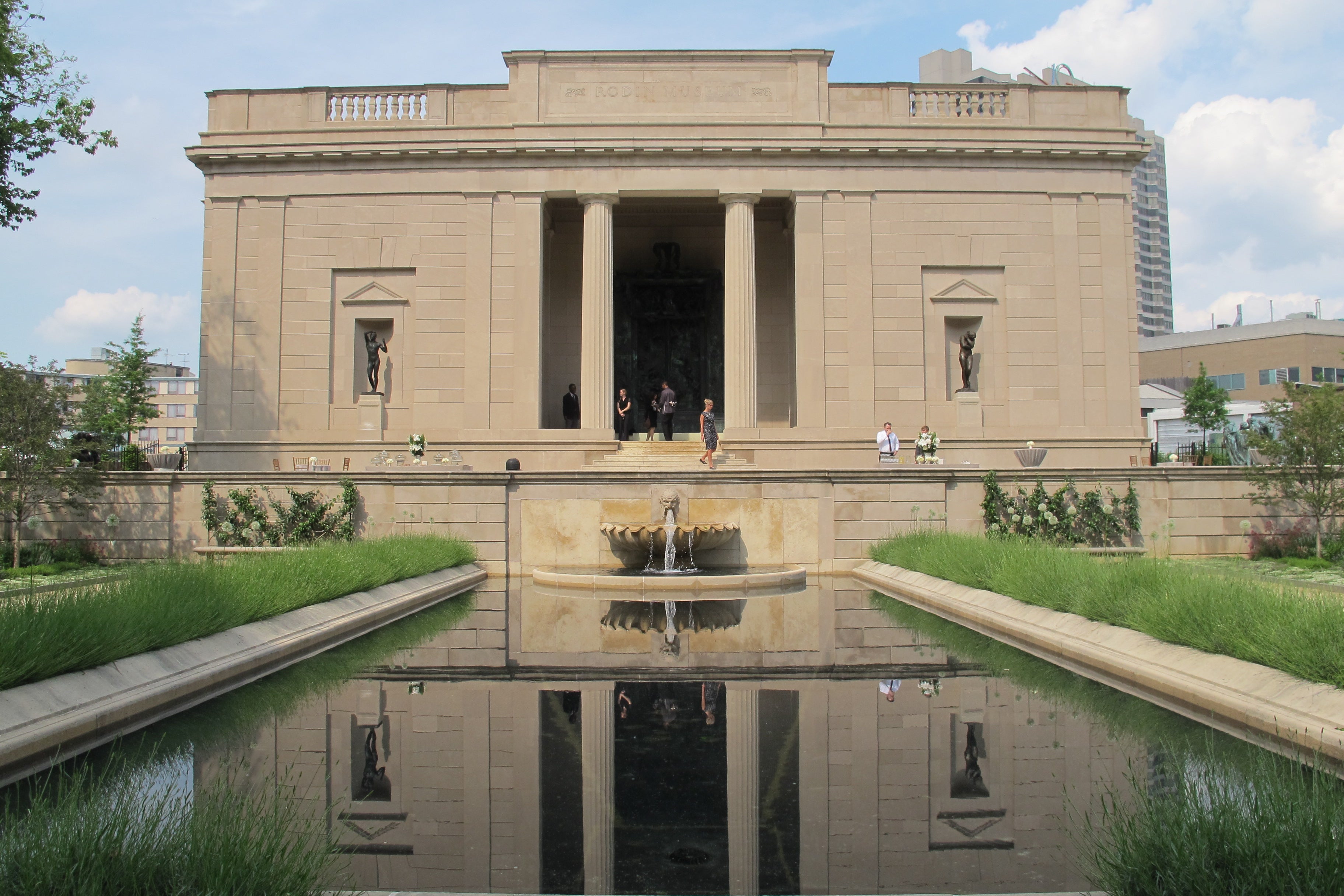Rodin Museum Rejuvenation

While Paul Cret was designing Albert Barnes’ gallery in Merion, his office was also working on plans for the Rodin Museum on the still-new Parkway. And now, decades later, as the Barnes built its new home on the Parkway, the Rodin Museum next door is quietly being restored.
For the last three years the Rodin Museum has undergone a near-complete overhaul that is expected to be complete in July.
In the 1920s Paul Cret and Jacques Gréber designed the Rodin Museum’s building and landscape as an ensemble, with Jules Mastbaum’s extensive Rodin collection specifically in mind. So it’s only fitting that the restoration campaign has been guided by a similar ensemble approach.
Over the last couple of years, the museum’s limestone exterior was cleaned and repointed, and the landscape was sensitively revived. Last fall, the Rodin Museum closed so that the collection and interiors could be restored as well. Here’s what the museum looked like during last week’s restoration preview:
Conservators from the Philadelphia Museum of Art and Materials Conservation Collaborative (MCC, formerly Milner + Carr Conservation) began the interior restoration work with a forensic analysis of the building “to understand the materials and finishes envisioned by Cret” for the interiors, said Andrew Lins, Senior Conservator at the Museum. They referenced old photos, correspondence, and Cret’s original plans, and they took about 150 paint samples to determine original paint schemes.
Sally Malenka, a conservator with the Philadelphia Museum of Art, said that the project’s whole objective was to “respect the age of the building and balance that with the renovations.”
The trick of conservation is sometimes to make it look like nothing changed. The impact instead is about authenticity. And it has been painstaking work to mend the museum’s terrazzo floors, repair the windows and gallery skylight, and the plasterwork while still allowing the Rodin to show its age. It took three months to remove layers of paint, and then consolidate the finishes.
During a recent visit to preview the restoration work, the museum’s main gallery is imminently familiar, but looks far less tired. The library’s wood paneling looks warmer, the bronze painted trim darkens over time and that patina remains. The octagonal rooms were again painted a “Pompeian red” that shifts in tone with the daylight.
Andrew Fearon, a conservator with MCC, reminded me that the plaster medallions in the main gallery were so coated with black soot, areas of the patterns were no longer discernable. Through cleaning, it became clear that Cret’s ornamentation was, as Fearon described, “restrained Beaux-Arts with very modern elements,” like the zigzag motif.
Even though the museum will be closed for two more months, visitors are still invited to stroll through the thoroughly French garden and enjoy several of the museum’s large bronze sculptures, which were recently returned to their original locations outdoors. These sculptures have not been part of the museum’s landscape since the 1960s. Each sculpture has been repatinated and glazed to prevent corrosion. Eve and The Age of Bronze were placed in niches in the museum’s facade, and Adam and The Shade once again stand in the Meudon Gate’s archways. The Burghers of Calais was installed just east of the museum, and awaits its final treatments. This sculpture, like The Thinker or The Gates of Hell, is among Rodin’s most famous and now that it’s back outside anyone can experience it, free of charge. What a gift to the city.
The Rodin Museum originally opened on Bastille Day in 1929, and this year it will reopen on July 13. Inside the refreshed museum curators have planned new interpretive materials to showcase different aspects of Rodin’s work. First up will be works relating to The Gates of Hell, a 37-year project of Rodin’s of which the Rodin Museum has the first cast.
WHYY is your source for fact-based, in-depth journalism and information. As a nonprofit organization, we rely on financial support from readers like you. Please give today.





